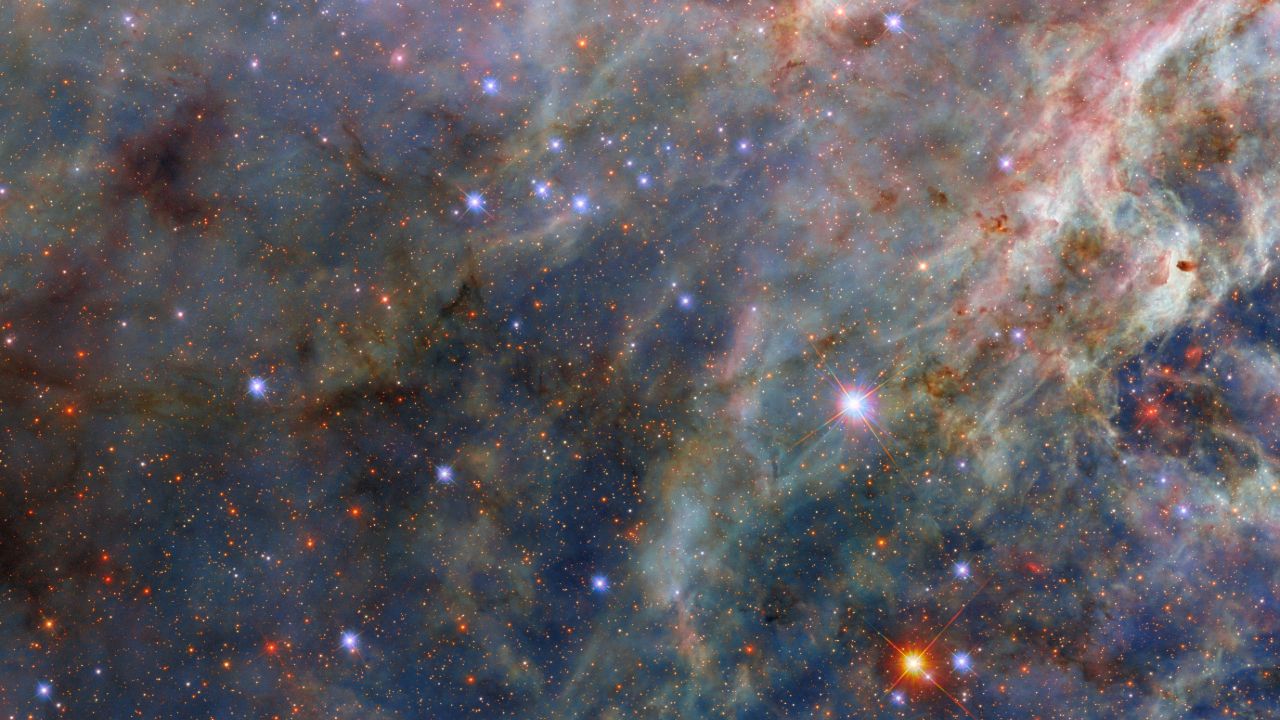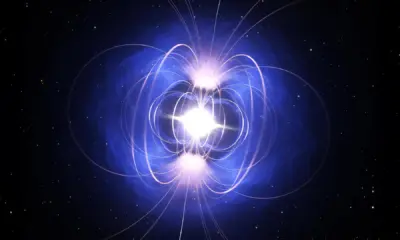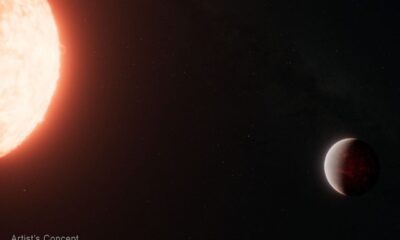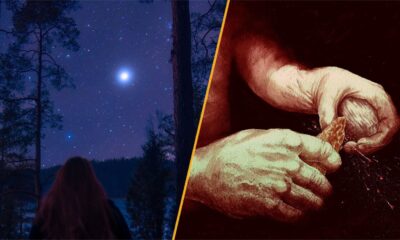Science
Hubble Captures Stunning Image of Star Formation in Tarantula Nebula

The Hubble Space Telescope has recently captured a breathtaking image of the **Tarantula Nebula**, the largest and brightest stellar nursery located in the **Large Magellanic Cloud**, a dwarf galaxy that orbits the Milky Way. This stunning visual highlights a region on the outskirts of the nebula where the super star cluster **R136** resides, showcasing the dynamic processes of star formation occurring in this extraordinary cosmic environment.
The **Tarantula Nebula** is notable for housing some of the most massive stars ever discovered, with individual stars reaching masses up to **200 times** that of our Sun. Within this nebula, astronomers have identified a rare category of stars known as **Wolf-Rayet stars**. These immense stars have shed their hydrogen envelopes, allowing them to emit powerful stellar winds that significantly impact their surrounding dusty environments.
Located approximately **160,000 light-years** from Earth, the **Tarantula Nebula** can be found in the constellations of **Dorado** and **Mensa**. The recent Hubble image clearly illustrates the presence of these rare **Wolf-Rayet stars** and their complex interactions with the nebula’s material.
Exploring the Mysteries of the Tarantula Nebula
To investigate the fascinating processes occurring within the **Tarantula Nebula**, astronomers have implemented an observing initiative called **Scylla**, named after the mythical Greek monster. This program aims to analyze the dense clouds of dust and gas surrounding the stars, providing insight into star formation and evolution. The **Scylla** program operates alongside another Hubble project, known as **ULLYSES** (Ultraviolet Legacy Library of Young Stars as Essential Standards), which focuses on the study of massive young stars in both the **Large** and **Small Magellanic Clouds**.
The collaboration between these two programs allows scientists to gain a deeper understanding of the conditions required for star formation in regions like the Tarantula Nebula. The data collected through these initiatives will contribute to our knowledge of the life cycles of stars and their influence on the evolution of galaxies.
For those intrigued by the mysteries of the universe, the ongoing research surrounding the **Tarantula Nebula** and its remarkable phenomena continues to unfold. The findings not only enhance our understanding of stellar formation but also deepen our appreciation for the vast complexities of the cosmos.
-

 Technology5 months ago
Technology5 months agoDiscover the Top 10 Calorie Counting Apps of 2025
-

 Technology2 weeks ago
Technology2 weeks agoOpenAI to Implement Age Verification for ChatGPT by December 2025
-

 Health3 months ago
Health3 months agoBella Hadid Shares Health Update After Treatment for Lyme Disease
-

 Health3 months ago
Health3 months agoErin Bates Shares Recovery Update Following Sepsis Complications
-

 Health3 months ago
Health3 months agoAnalysts Project Stronger Growth for Apple’s iPhone 17 Lineup
-

 Technology5 months ago
Technology5 months agoDiscover How to Reverse Image Search Using ChatGPT Effortlessly
-

 Technology3 months ago
Technology3 months agoElectric Moto Influencer Surronster Arrested in Tijuana
-

 Technology2 months ago
Technology2 months agoDiscover 2025’s Top GPUs for Exceptional 4K Gaming Performance
-

 Technology5 months ago
Technology5 months agoMeta Initiates $60B AI Data Center Expansion, Starting in Ohio
-

 Technology5 months ago
Technology5 months agoRecovering a Suspended TikTok Account: A Step-by-Step Guide
-

 Health5 months ago
Health5 months agoTested: Rab Firewall Mountain Jacket Survives Harsh Conditions
-

 Lifestyle5 months ago
Lifestyle5 months agoBelton Family Reunites After Daughter Survives Hill Country Floods





















